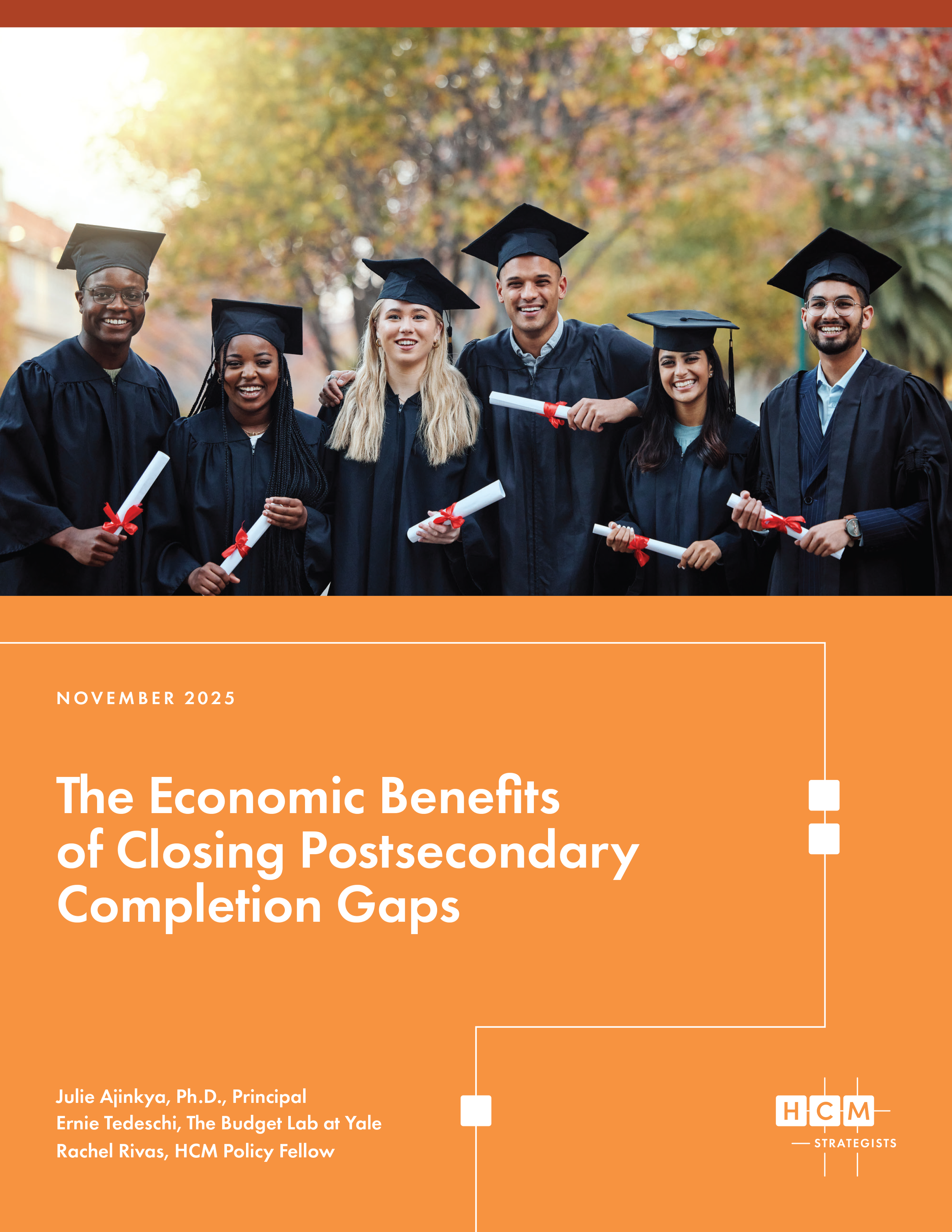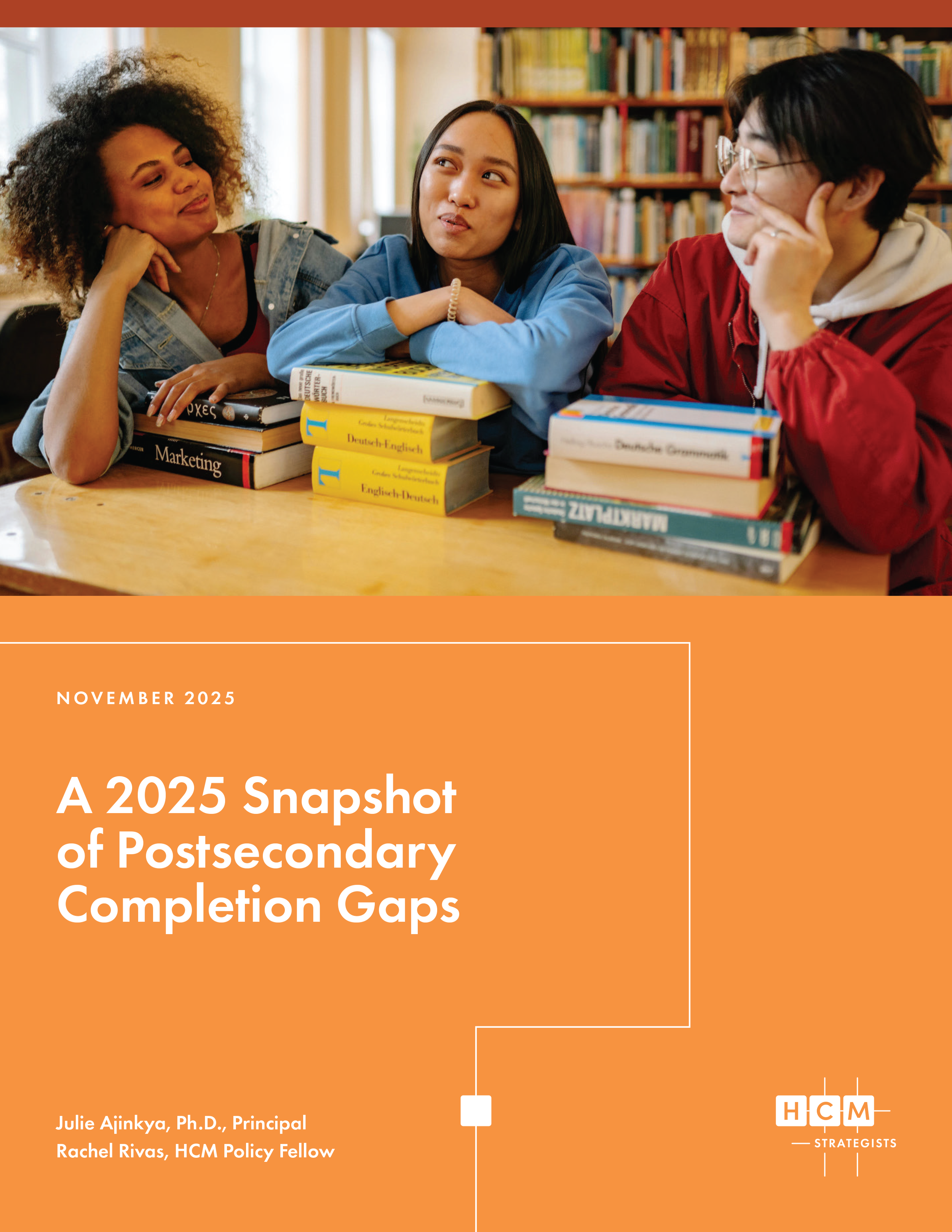
Resources and insights to support professionals working across the education sector
A 2025 Update of State Investments in Short-term Credential Pathways
Our State Policy & Research Director, Stephanie Murphy, provides a 2025 update, our most comprehensive update to date, to HCM’s typology and policy landscape analysis of state investments in short-term credential pathways (originally published in 2023 and updated previously in 2024). Her latest analysis shows that overall state investments now cumulatively total at least $8.1 billion.
The Economic Benefits of Closing Completion Gaps
The Economic Benefits of Closing Postsecondary Completion Gaps, by Julie Ajinkya, Rachel Rivas and Ernie Tedeschi, using national economic modeling to investigate the question: What would happen if we closed postsecondary completion gaps by 2040? Their analysis finds that closing gaps for those furthest from opportunity is not just moral imperative, but an economic one as well.
A 2025 Snapshot of Postsecondary Completion Gaps
Our new report, A 2025 Snapshot of Postsecondary Completion Gaps, by Julie Ajinkya and Rachel Rivas, provides a descriptive snapshot of postsecondary completion rates across key demographic groups, shedding light on where the biggest gaps persist for individuals furthest from opportunity.
The Latest Developments in State Investments in Short-term Credentials: A 2024 Update
HCM’s State Policy & Research Director, Stephanie Murphy, delves into the latest update to HCM Strategists’ 2023 typology and policy landscape analysis of recent state investments in short-term credential initiatives across the United States. States continue to embrace skills-based education as a key component of workforce development, with growing bipartisan support. As of November 2024, states have invested more than $5.6 billion in short-term credential pathways.
Building a Future of Opportunity: The Transformation Imperative in Postsecondary Education
As we close out 2024, our Partner Martha Snyder and Director Jessica Collis argue that it’s time for a transformation of our higher education system that leans into value, affordability, supports, and accountability to restore the public trust. Read their latest Insight blog for more.
A 2024 Update of State Investments in Short-term Credential Pathways
Our State Policy & Research Director, Stephanie Murphy, provides a 2024 update of her 2023 typology and policy landscape analysis of state investments in short-term credential pathways. Her latest analysis shows that over the past year, eight states have established 10 new initiatives. Overall state investments now total $5.6 billion.
Beyond Sticker Prices: How States Can Make Postsecondary Education More Affordable
Our latest postsecondary finance brief, Beyond Sticker Prices: How States Can Make Postsecondary Education More Affordable, analyzes financial aid programs and affordability-related data in nine states. This analysis, which looked across regions, populations and various financial aid models, illustrates the significant variation in affordability across states, institutions and income brackets.
Financing Futures: Session Presentation from 2024 “Forward Together” Lumina State Policy Retreat
Presentation of Financing Futures: 15 Years of Postsecondary Finance
Evolving Our Understanding of Equitable Postsecondary Finance
Insights Blog: Evolving Our Understanding of Equitable Postsecondary Finance
HCM + Edge Research Release Follow-Up Learner Research: Continuing to Explore the Exodus from Higher Education
HCM + Edge Research release results from second year of major research study, Continuing to Explore the Exodus from Higher Education.
It’s Time to Get REAL: A Policy Playbook to Demand Black Learner Excellence
A policy playbook to demand excellence for Black learners.
Short-term Credentials Continue to Grab Attention of State Lawmakers
In her latest blog, our director of state policy and research examines the latest state legislation for funding of short-term credential pathways.
A Typology and Policy Landscape Analysis of State Investments in Short-term Credential Pathways
The first of its kind typology and policy landscape analysis of short-term credentials programs by Stephanie M. Murphy, Ph.D.





















